I tested the best cat puzzle feeders to help my cats' digestion – here are the winners
The best cat puzzle feeders provide mental stimulation and make mealtime more fun.
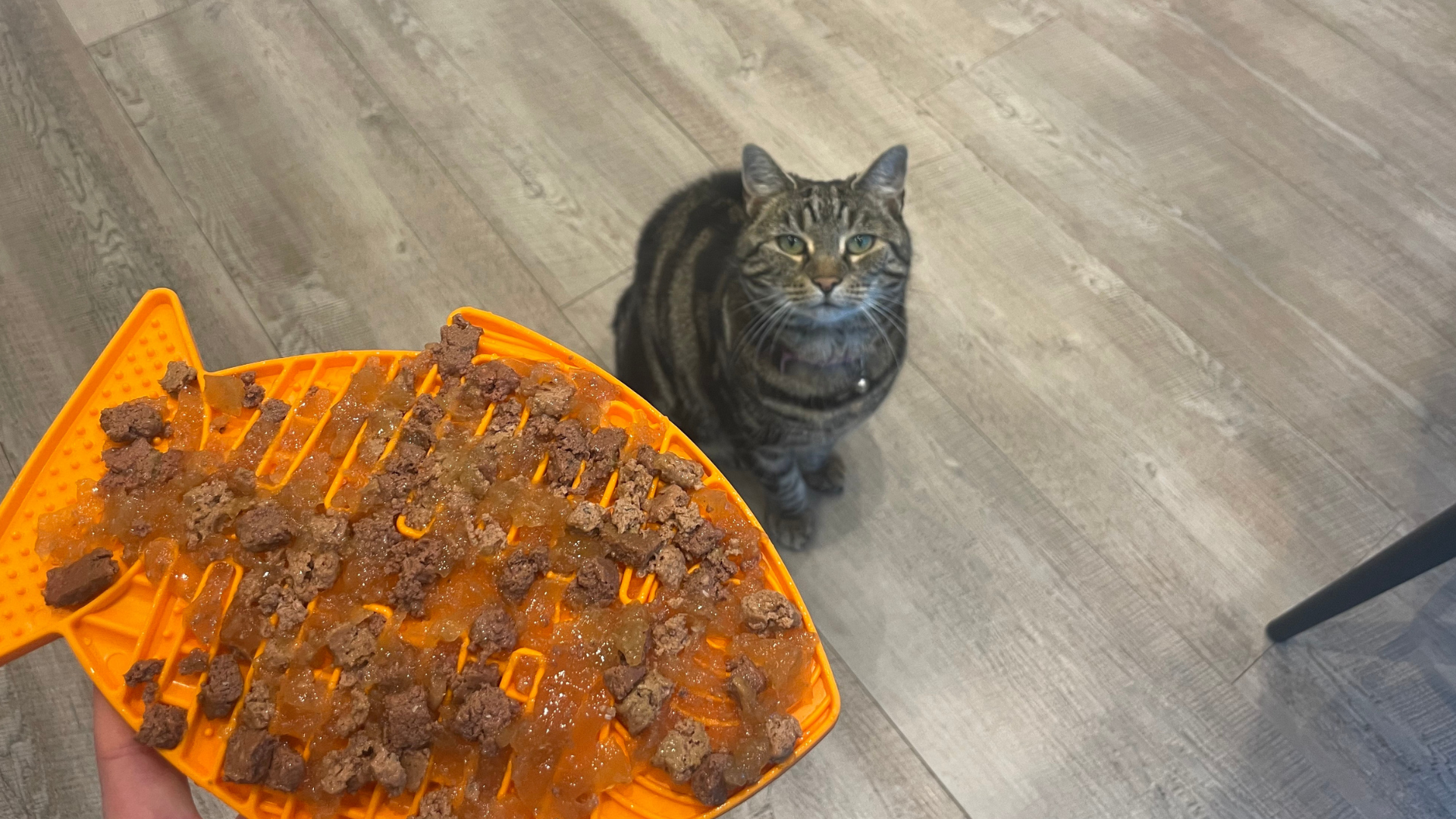
There are lots of reasons why you should invest in one of the best cat puzzle feeders. Not only can they reduce boredom and prevent destructive behavior, but they also help to slow down your cat's eating.
I've had cats for 19 years and they all have one thing in common: they wolf their food down in about 10 seconds. This isn't good for their digestion, and after speaking with some fellow cat parents, I discovered that this is a pretty common issue. To try and solve this, I tested eight puzzle feeders on my cats, Chilli and Nala, using the best cat food for senior cats.
I also asked an expert for her opinion on them. Vet Dr. Joanna Woodnutt says: "Puzzle feeders are great for cats. As natural hunters, cats are used to having small feeds throughout the day, so encouraging them to work for their food and eat little and often is great enrichment.”
The best cat puzzle feeder 2025
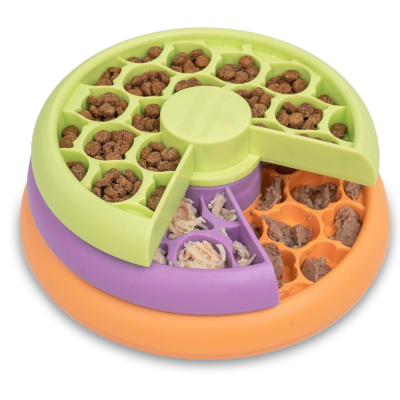
The best puzzle feeder overall
I’ve tested numerous products by Nina Ottosson and they all have one thing in common: they’re excellent quality. The Kitty Lickin’ Layers is no exception and is great value for money for what you get.
The puzzle holds up to half a cup of food and while it’s a little bit time-consuming to fill up, it’s totally worth the effort. Not only has it slowed down Nala’s pace, but it’s also encouraged her to eat the food she’s gone off of recently, which was a lovely surprise. To reveal the food, your cat has to spin the layers and use their foraging instincts to dig it out which is great for mental stimulation.
Reasons to buy: Mentally stimulating, slows down eating, dishwasher-safe, high quality, free from BPA, PVC, and phthalates.
Reasons to avoid: Time-consuming to fill up.
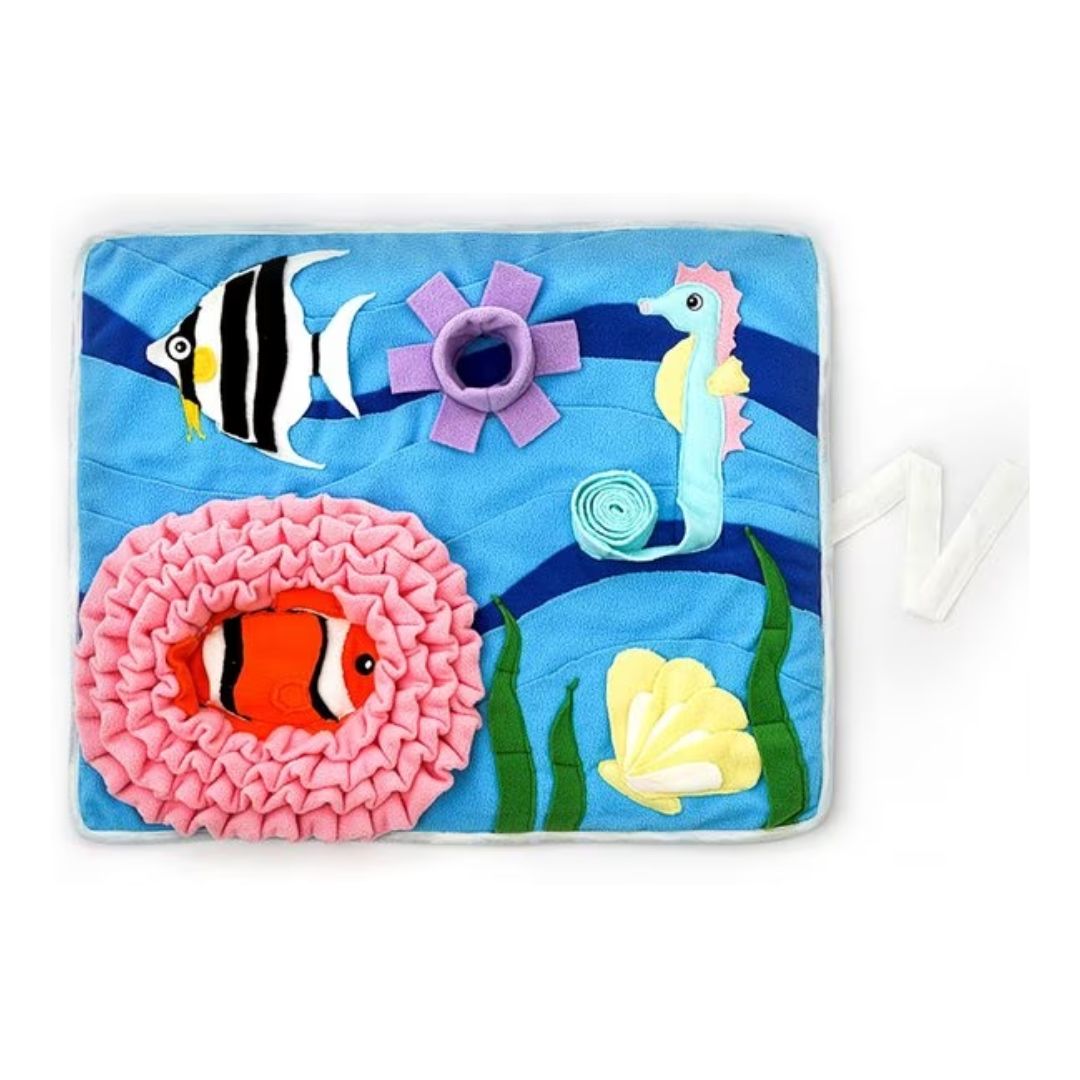
The best snuffle mat cat puzzle feeder
My cats have had so much fun with this snuffle mat, and always try to find it in the cupboard. There are lots of different compartments to hide the food in, which is great for activating their natural foraging instincts.
Due to the material, I prefer to use this with dry food or treats, but you can easily pop it in the washing machine after use. It also has an anti-slip bottom to prevent it moving around, and is made from non-toxic materials.
Reason to buy: Engaging, anti-slip material, activates foraging instincts.
Reason to avoid: Not the best for wet food.
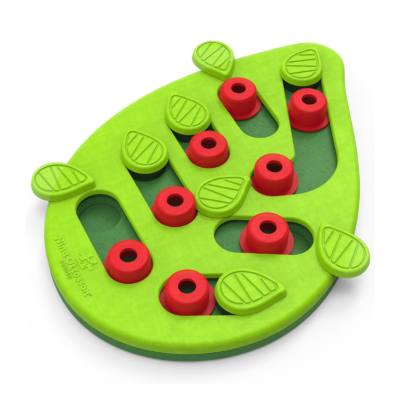
The best cat puzzle feeder for dry food
Chilli and Nala love eating from this puzzle feeder and it really slows their pace down. To reveal the food, they have to spin the pegs and paw the leaves which is great for reducing boredom.
It holds up to 1/4 cup of food and is made from an eco-friendly material that's free from BPA, PVC and phthalate. While it is suitable for wet food, I prefered to fill it with dry biscuits instead.
Reason to buy: BPA/PVC/phthalate-free, engaging, suitable for wet/dry food.
Reason to avoid: Moves around on hard flooring.
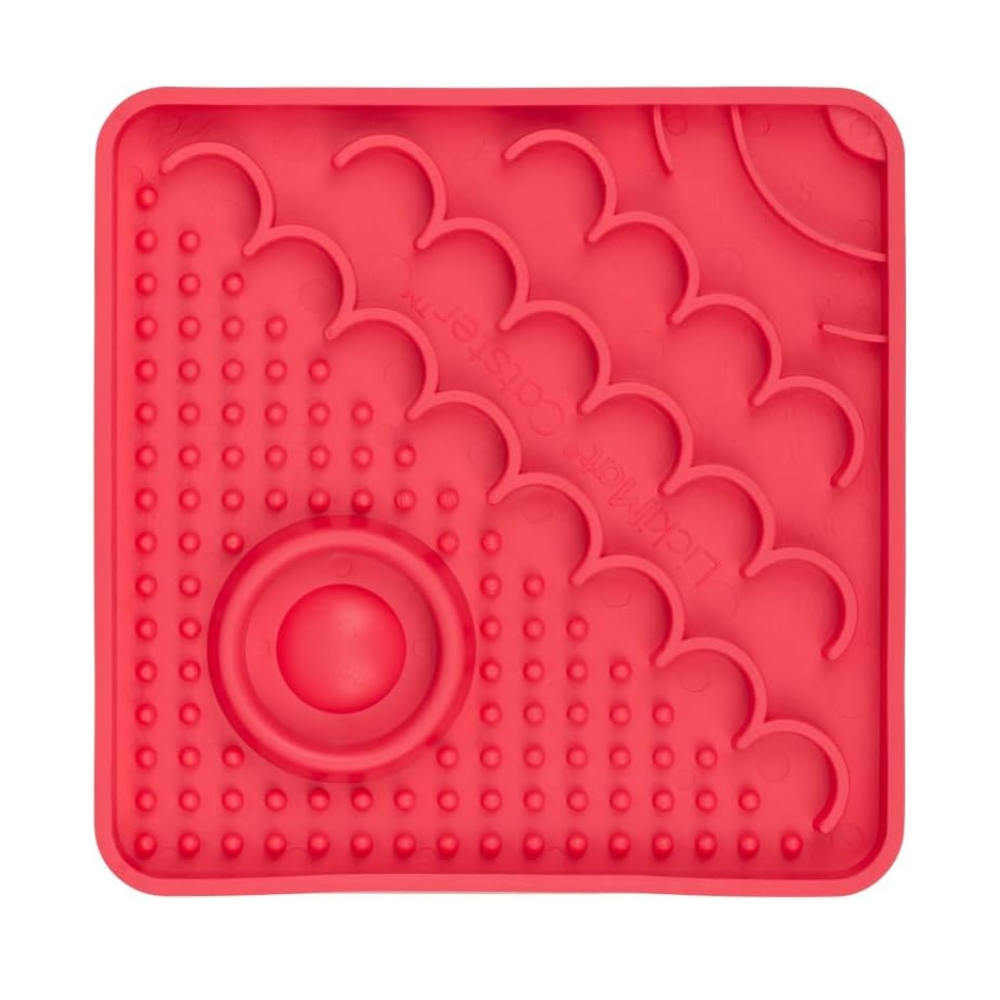
The best cat puzzle feeder for wet food
Unlike many puzzles, LickiMats are ideal for wet food as you can easily clean them out. Nala really enjoyed eating from the Catster model and it's significantly slowed down her speed. It also encourages her lick her food, which increases saliva production and promotes healthy digestion.
There are various different grooves and shapes to keep things interesting, and I found it fairly easy to put the food in. The material is free from BPA, silicones, PVC and phthalates, meaning it's safe for your kitty to eat from.
Reason to buy: BPA/PVC/phthalate/silicone-free, slows down eating, promotes saliva production.
Reason to avoid: Hand wash only.
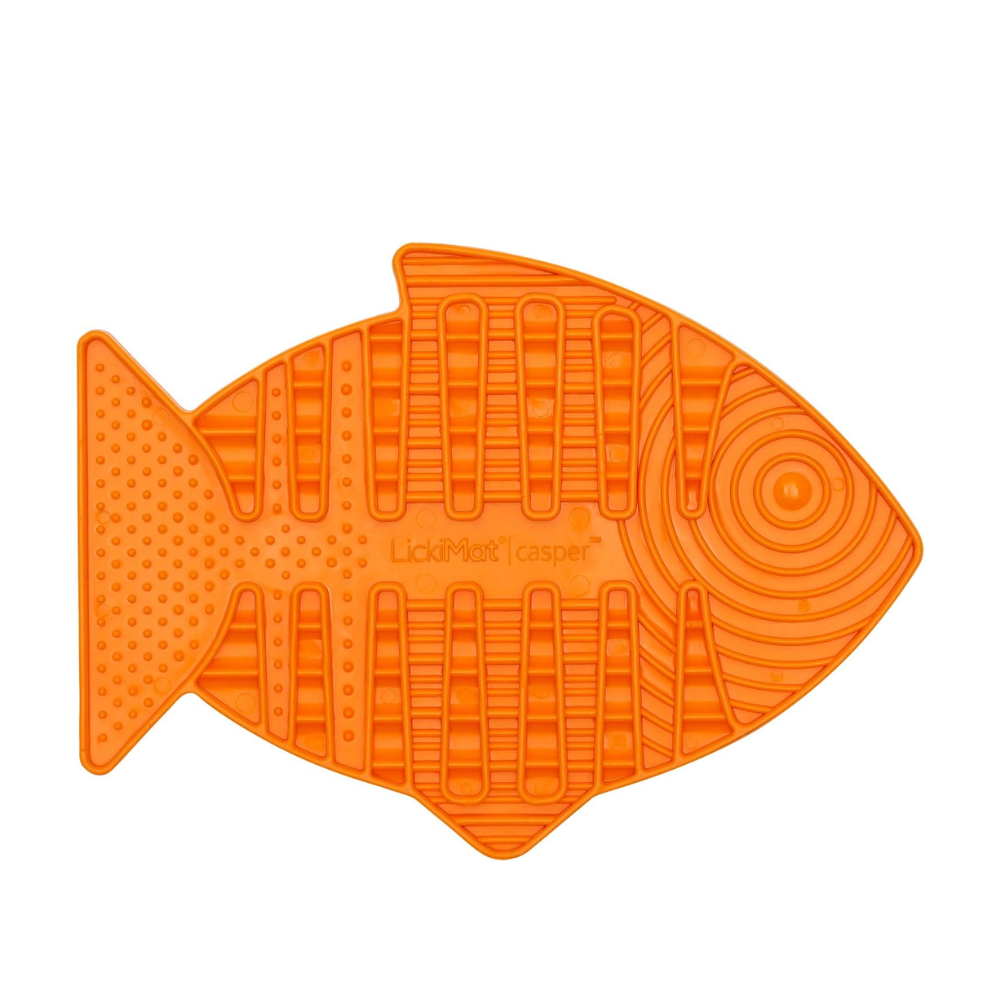
The best cat puzzle feeder for mousse food
I was skeptical that my cats would like eating from this puzzle, but I was pleasantly surprised. Not only has it slowed their eating down, but it's also encouraged them to eat food that they haven't been so keen on lately.
The holes are quite small, so I think it works best with mousse or puree consistencies. While it is possible to put chunky food inside, I'd recommend the Catster model in this guide instead. It's made from a non-toxic and recyclable material that's BPA, silicone, PVC and phthalate-free.
Reason to buy: BPA/PVC/phthalate/silicone-free, slows eating, encourages eating.
Reason to avoid: Hand wash only,
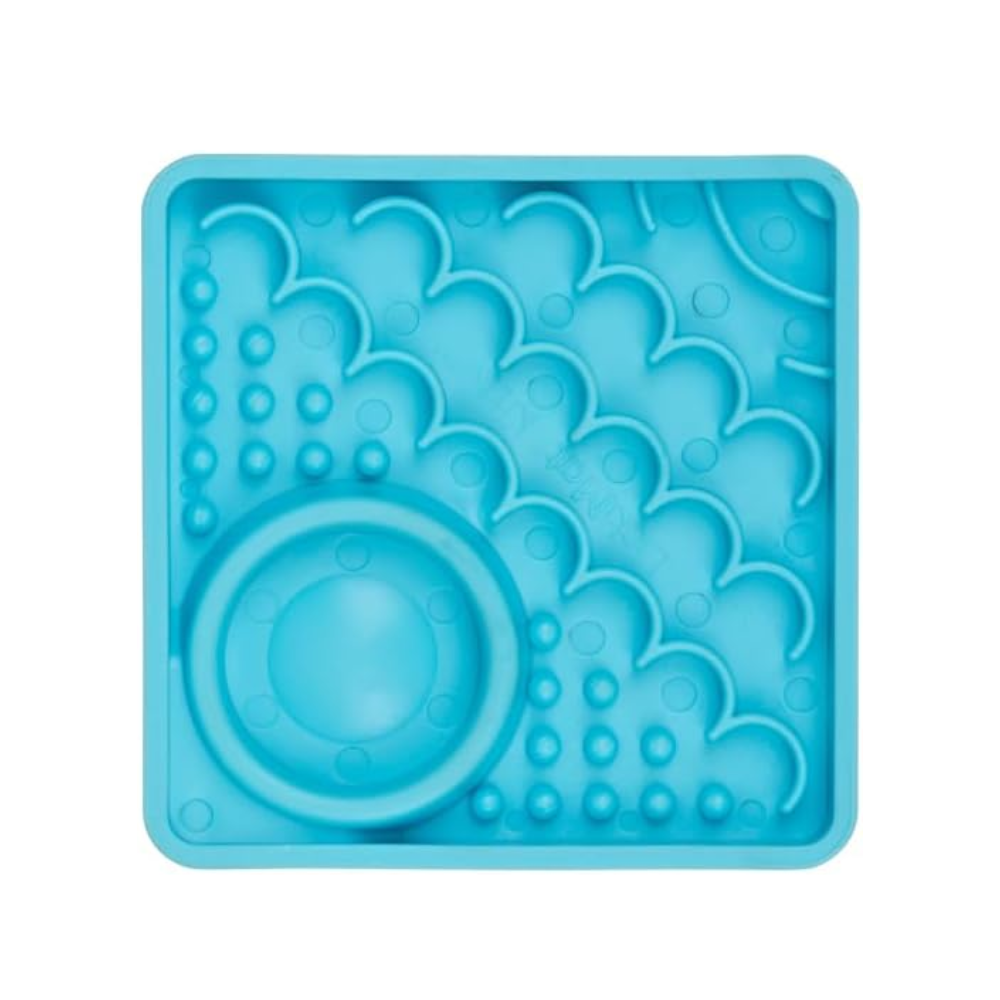
The best puzzle feeder for kittens
If you have a kitten or small cat, then the LickiMat Kitty Mat is a great choice. Just like the Catster model, this puzzle prevents boredom and slows down your feline's eating. The only difference is the size (which I've taken a photo of for comparison).
This wasn't big enough for my senior cats' meals, but it worked well with treats and snacks. It's made from non-toxic material and is easy to fill up with the back of a spoon or spatula.
Reason to buy: Good size for kittens, BPA/PVC/phthalate/silicone-free.
Reason to avoid: Small for adult cats, hand wash only.
Photos from testing
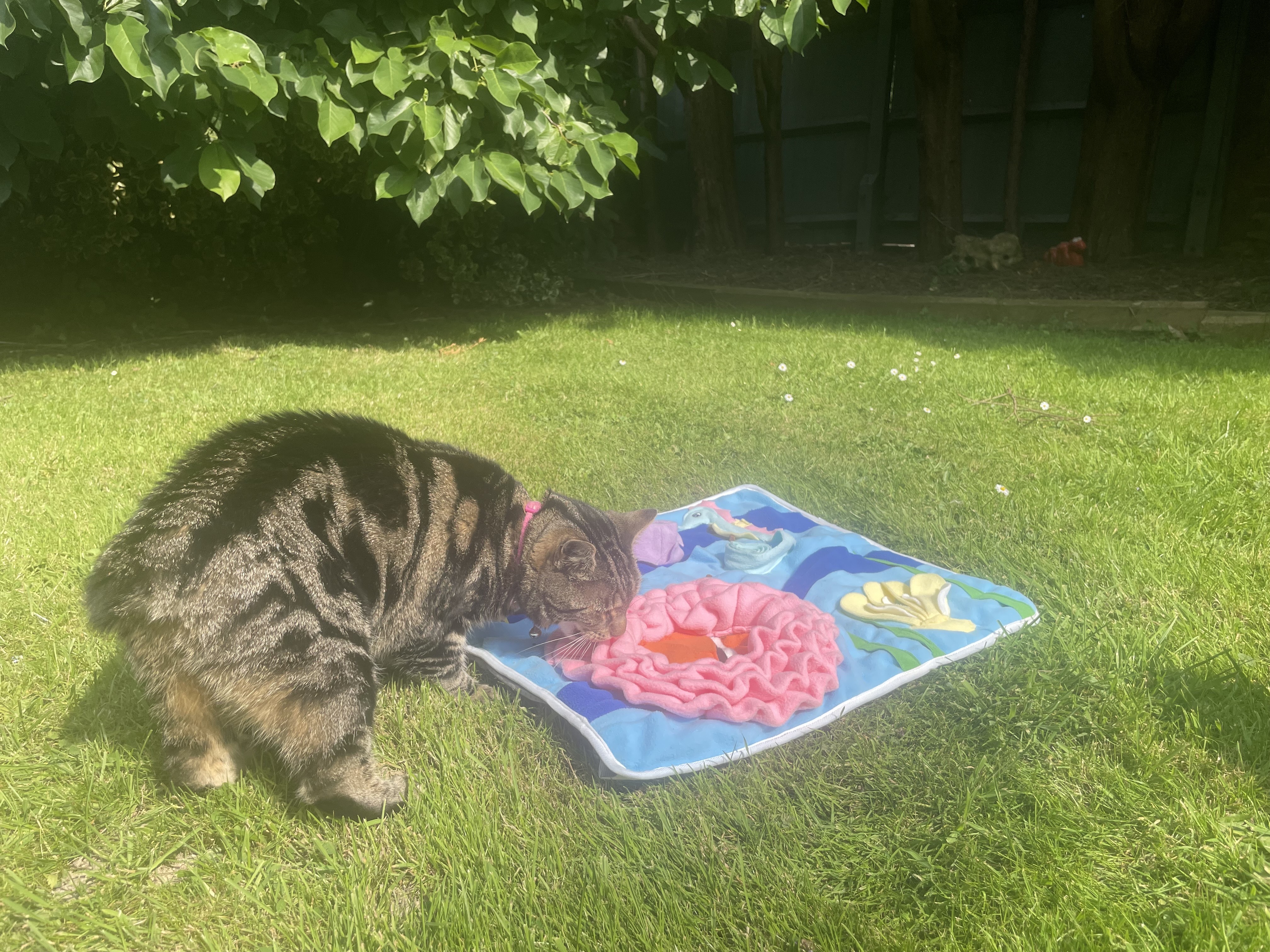
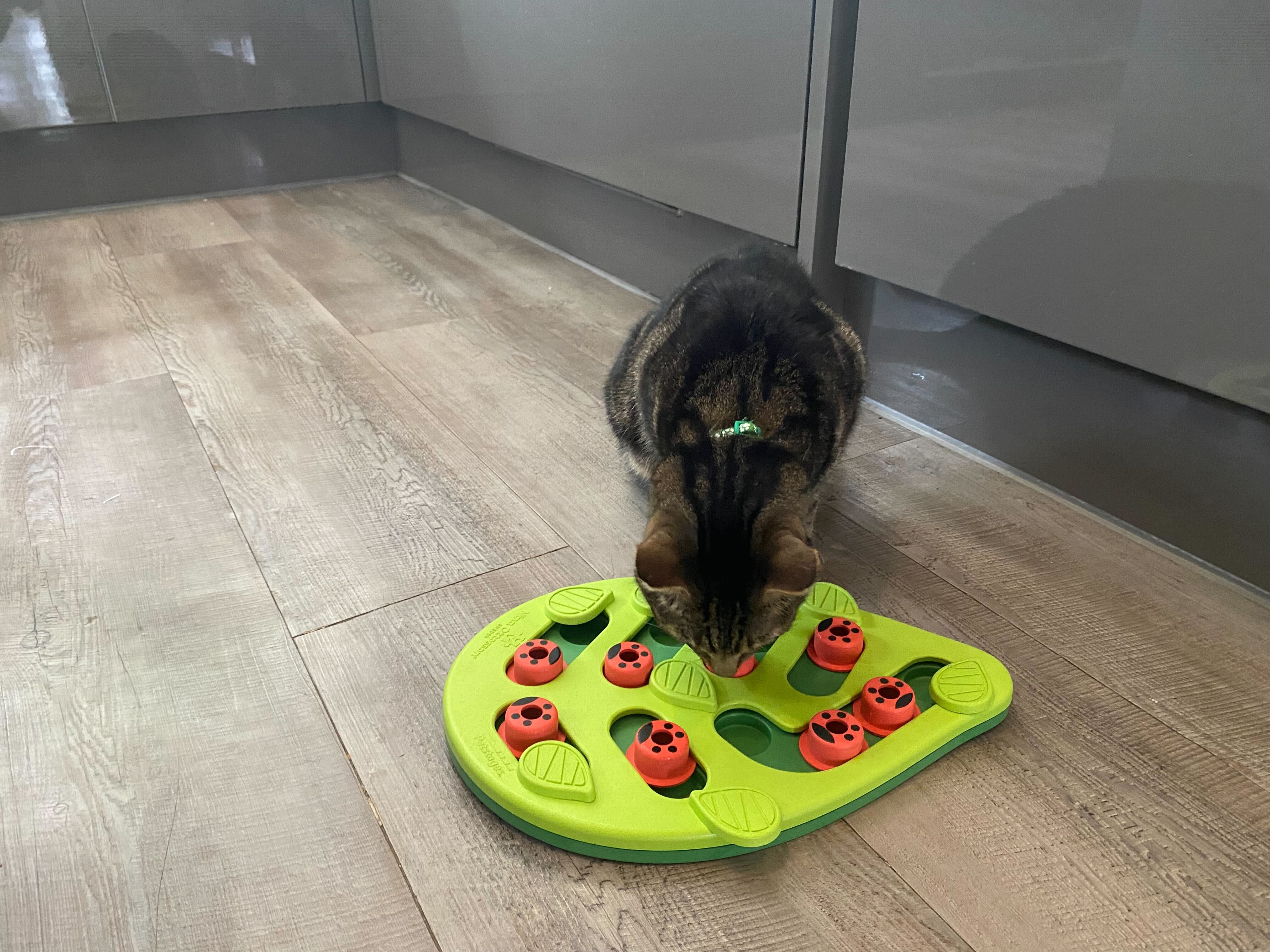
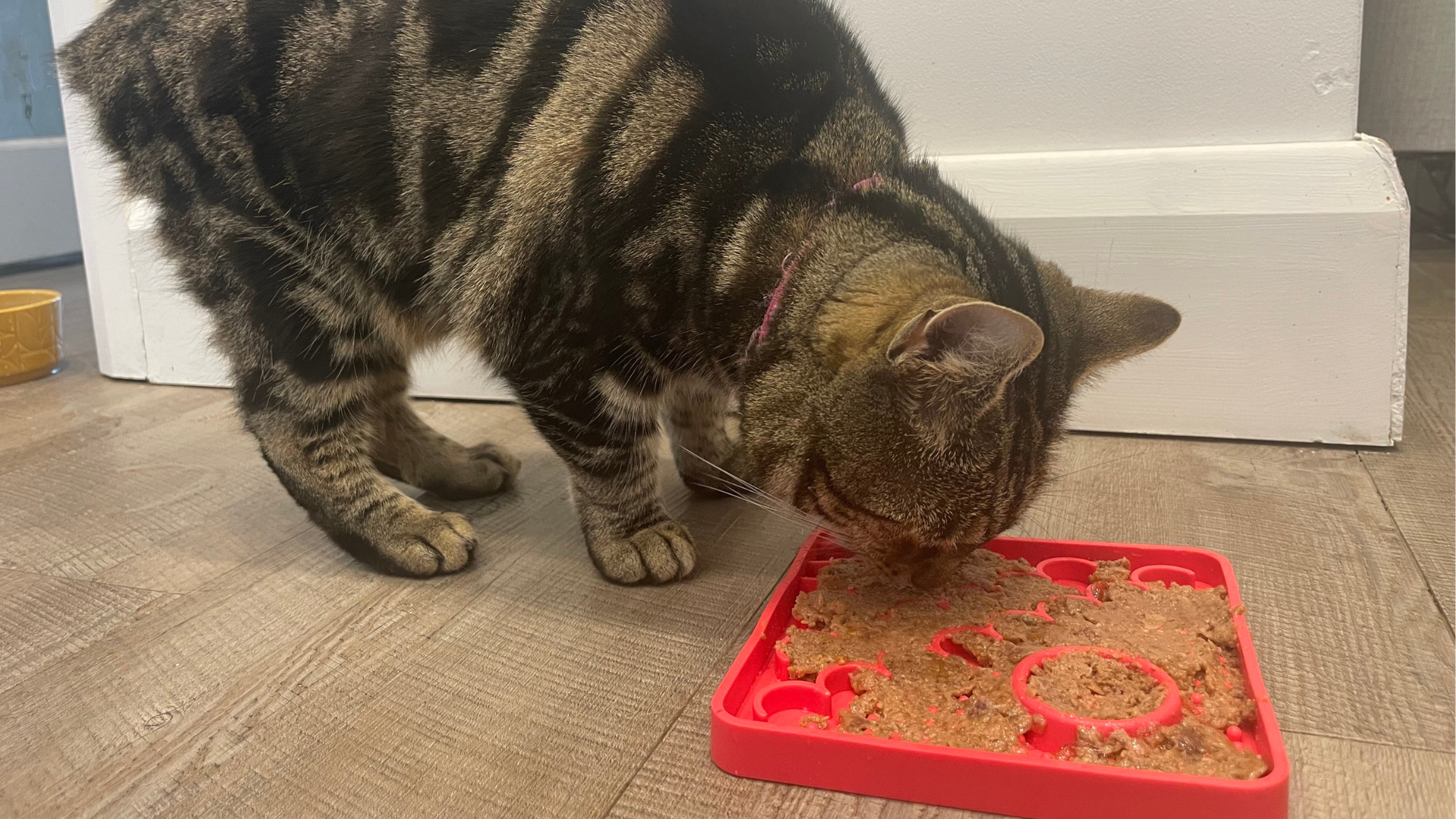
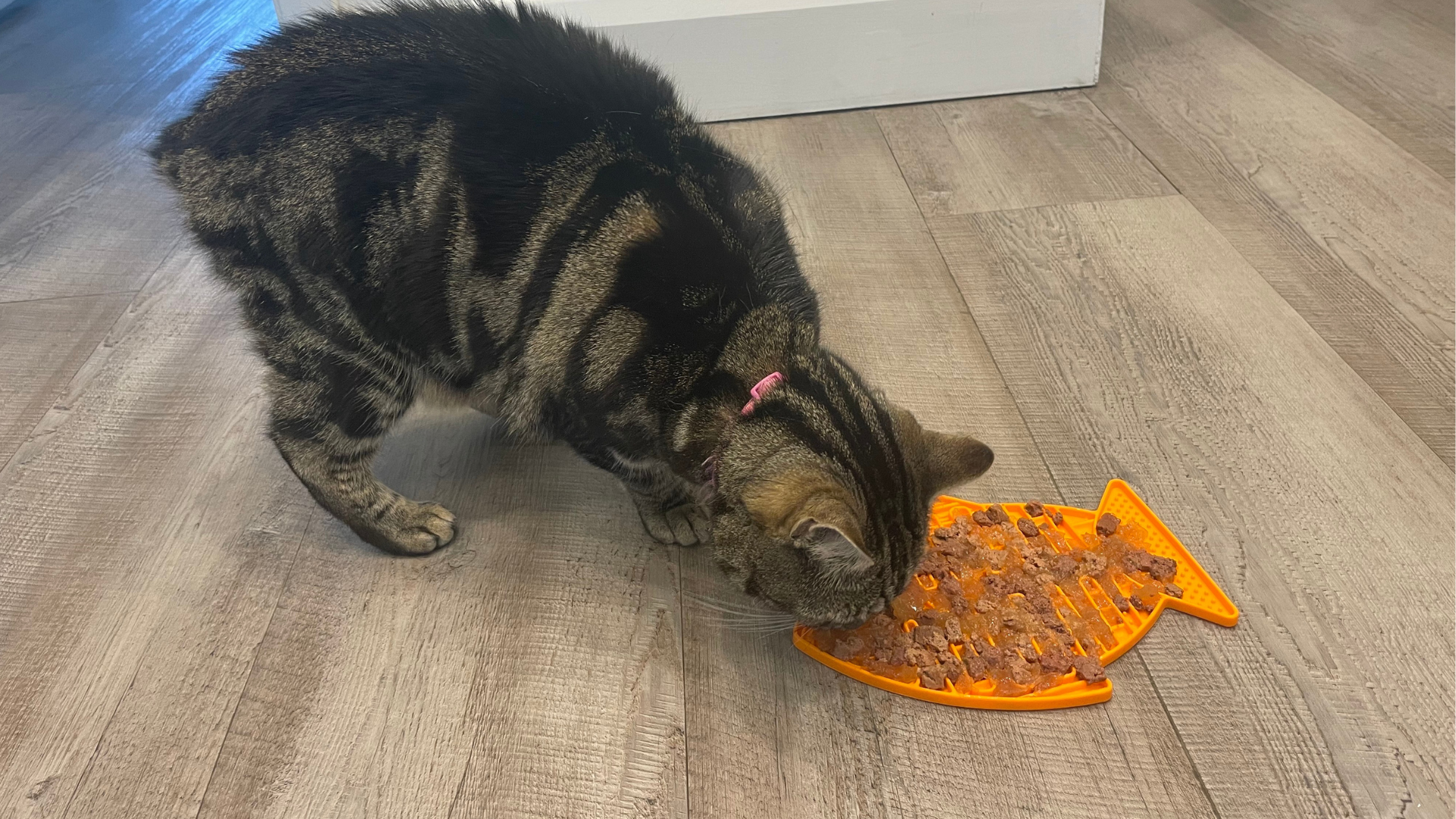
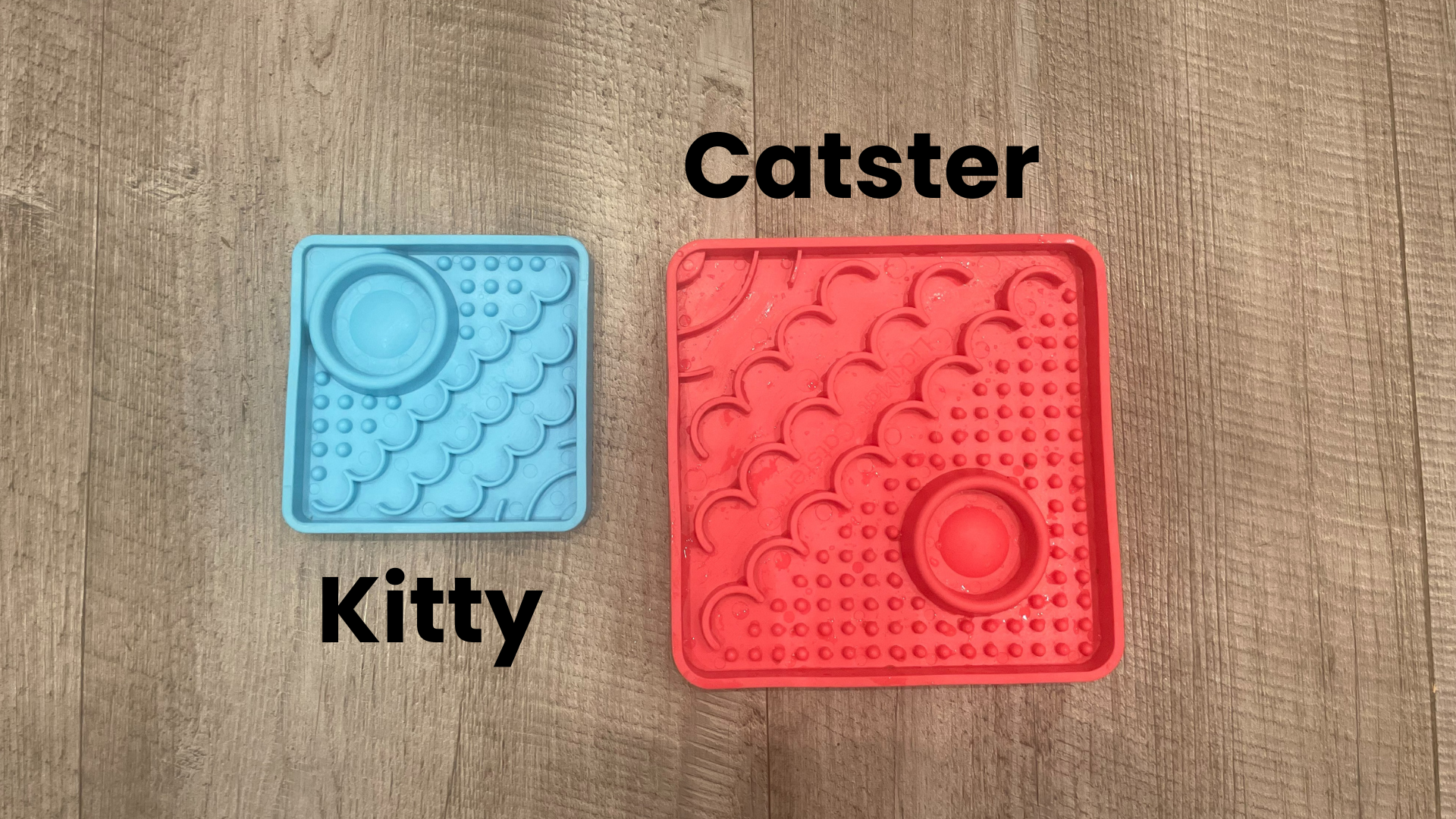
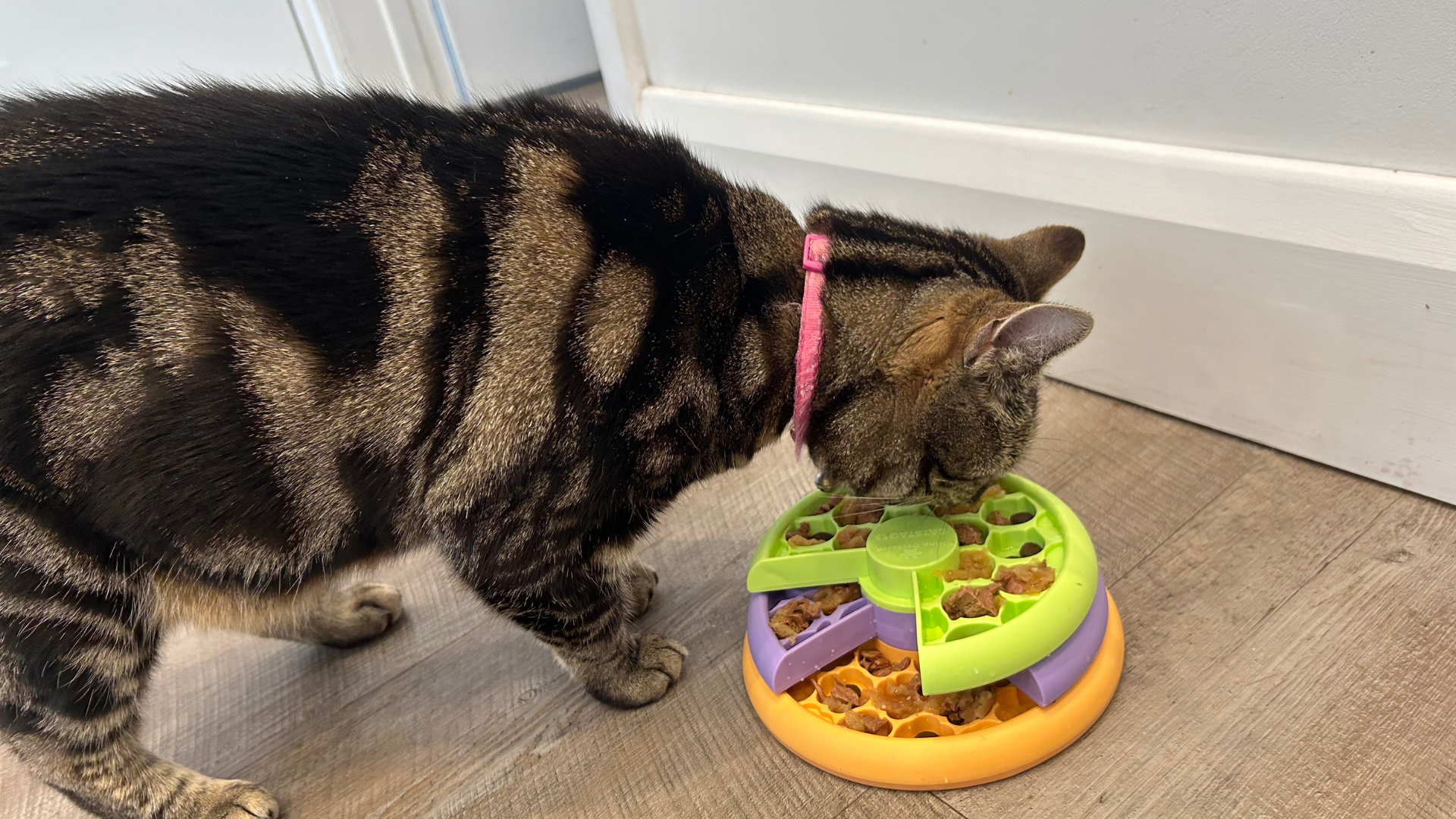
Other cat puzzle feeders to consider
I also tested Nina Ottosson's Rainy Day Puzzle (pictured below). It's great for mental stimulation and was voted as the 'best advanced puzzle' in our best cat toys guide. However, my cats prefer the Buggin' Out Puzzle as a primary feeder, which is a little bit easier.
I tested the Brightkins Spinning Hydrants Treat Puzzle. Chilli and Nala couldn’t get the hang of it, but if you’ve got a super clever cat or dog, I’m sure they could have lots of fun.
Once you’ve hidden the treats inside the hydrants, your pet has to spin the middle around to find them. To give my cats a helping hand, I hid the treats underneath the hydrants instead of inside, which was a lot easier for them to work out. It’s made from BPA-free plastic and is really easy to keep clean.
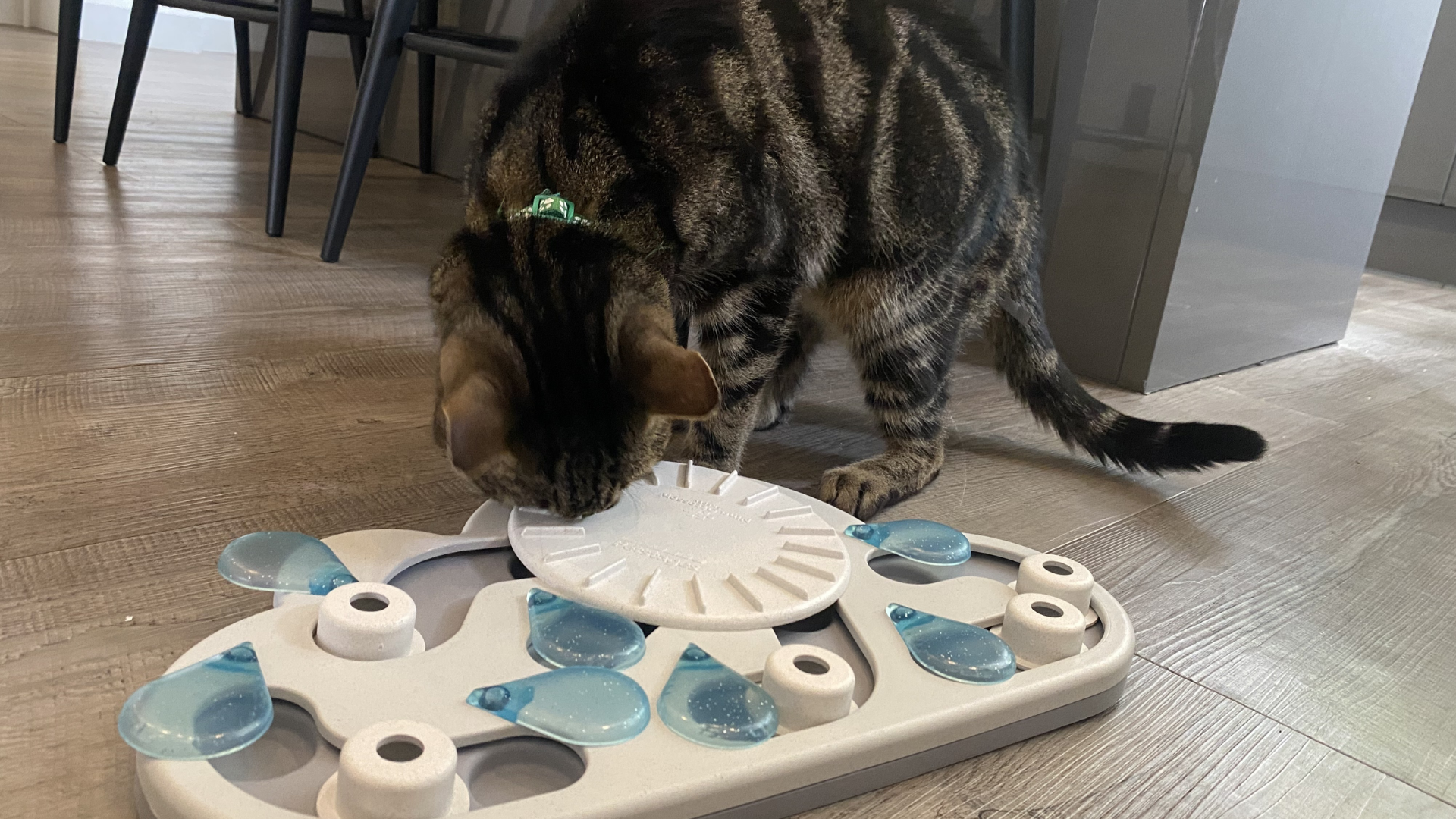
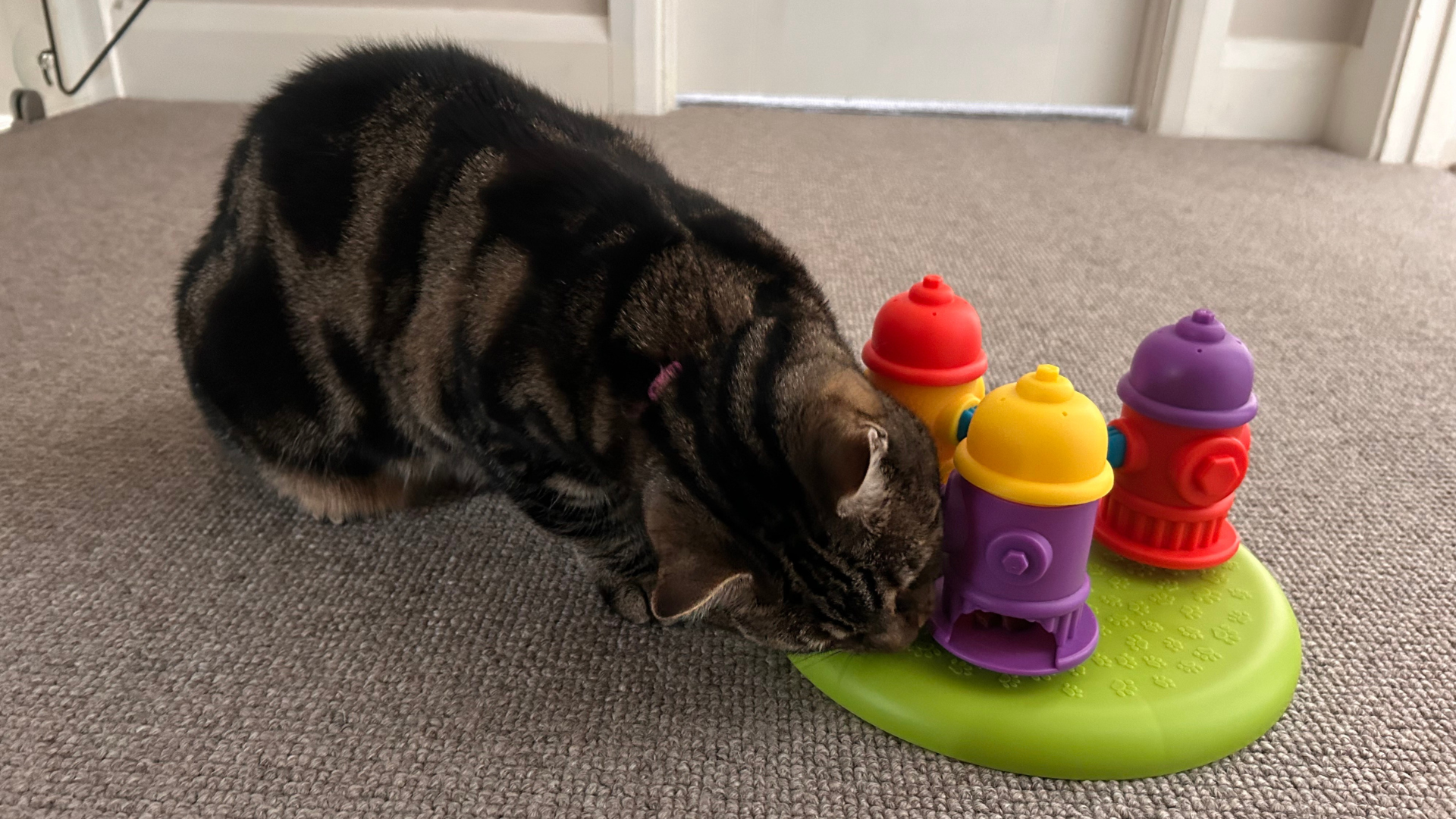
How we tested the best cat puzzle feeders
When it came to selecting the best cat puzzle feeders for this guide, we focused on three key areas – feeder type, food type, and material.
Feeder type: Puzzle food bowls can generally be split into two types - slow feeders that are designed to help your kitty eat their food at a more leisurely pace, and puzzle feeders which are more focused on providing mental stimulation.
Food type: Almost all puzzle feeders work beautifully with dry kibble and cat treats, but we’re mindful that some of our feline friends prefer the best wet cat food and so we’ve included options in this guide that will accommodate both wet and dry food.
Material: Models made of plastic tend to be preferred by pet owners as they’re more durable and better for holding both wet and dry food. However, we understand that they're not as easy to store, so we included a foldable mat, too. We ensured they were made from food-safe materials and free from BPA.
I tested the products repeatedly and only included the ones that my cats enjoyed eating from. I checked that they were easy to use, stimulating and slowed their eating down.
Here's more information on how we test.
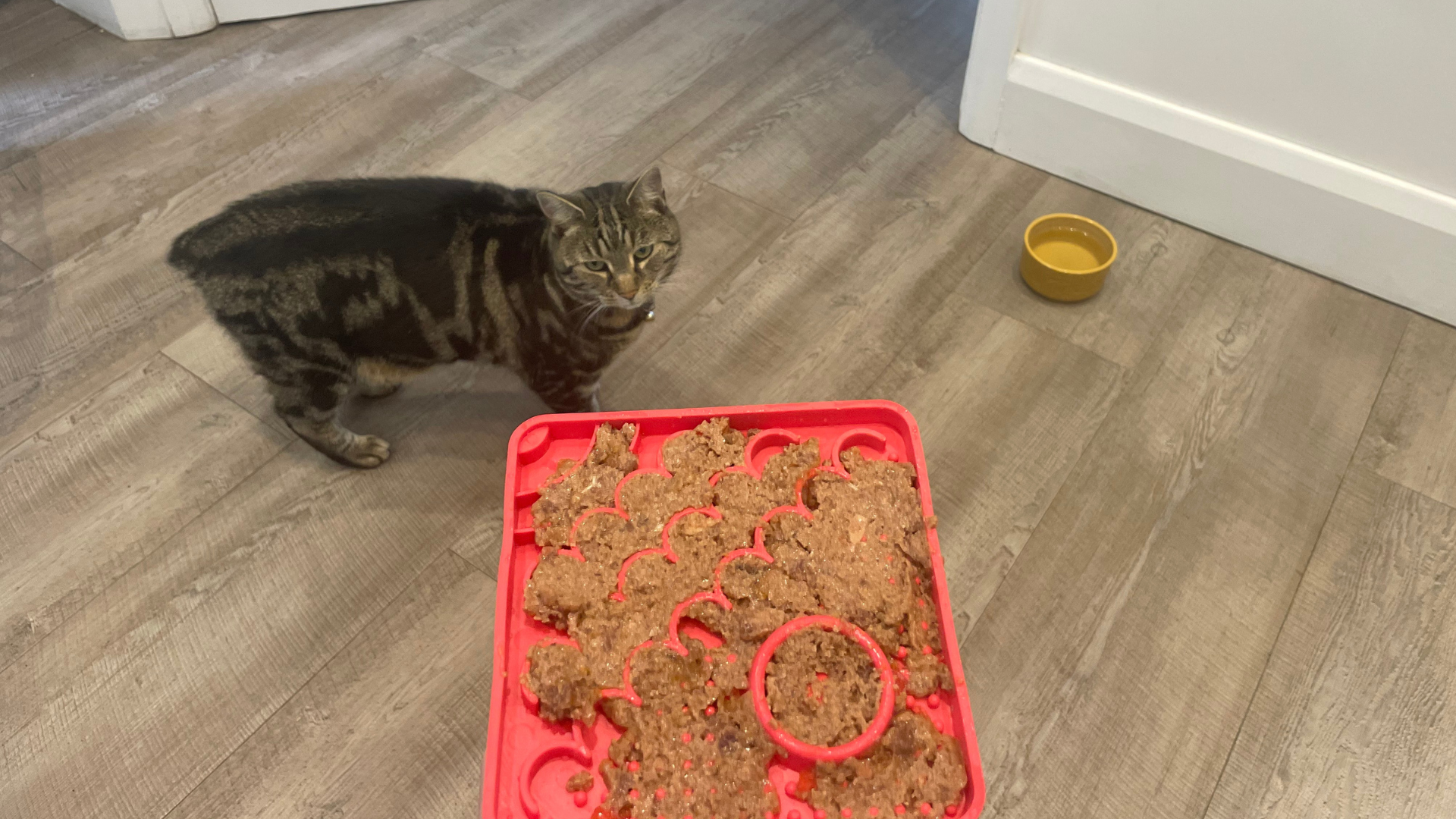
How to choose the best cat puzzle feeder
Choosing the right puzzle feeder will depend on the number of cats you have around and the way they typically like to play. If you have multiple cats, a toy which leans more towards a single animal – like the Buggin' Out Puzzle – might not suit.
Although we're looking to add enrichment and stimulation to their lives, do bear in mind that cats which don't have the drive to fight their way through a puzzle may not get on too well with more complex toys. Sometimes you may be better served picking up a LickiMat or two, and offering up their food in a slightly different way. They'll get that enrichment without even realizing they're doing something different.
Even if you do pick up something that is more explicitly a puzzle, staged learning is an important factor to prevent rejection. Teach them that there are treats inside (and that they're possible to extract) by at first making it easy – they'll then be more inclined to solve the more difficult versions.
Woodnutt goes on to say that when choosing a puzzle feeder, you want to carefully consider the design to ensure it meets your cat's needs.
“You should think about whether it’s active (such as a ball) or stationary (like some of the tower feeders). Which is most appropriate will depend on your cat’s mobility. You should also check what sort of food and type of kibble they work best with- some may have holes too small for large dental kibble, for instance. You can get several types of feeders, so follow your instincts for which your cat will enjoy most.”
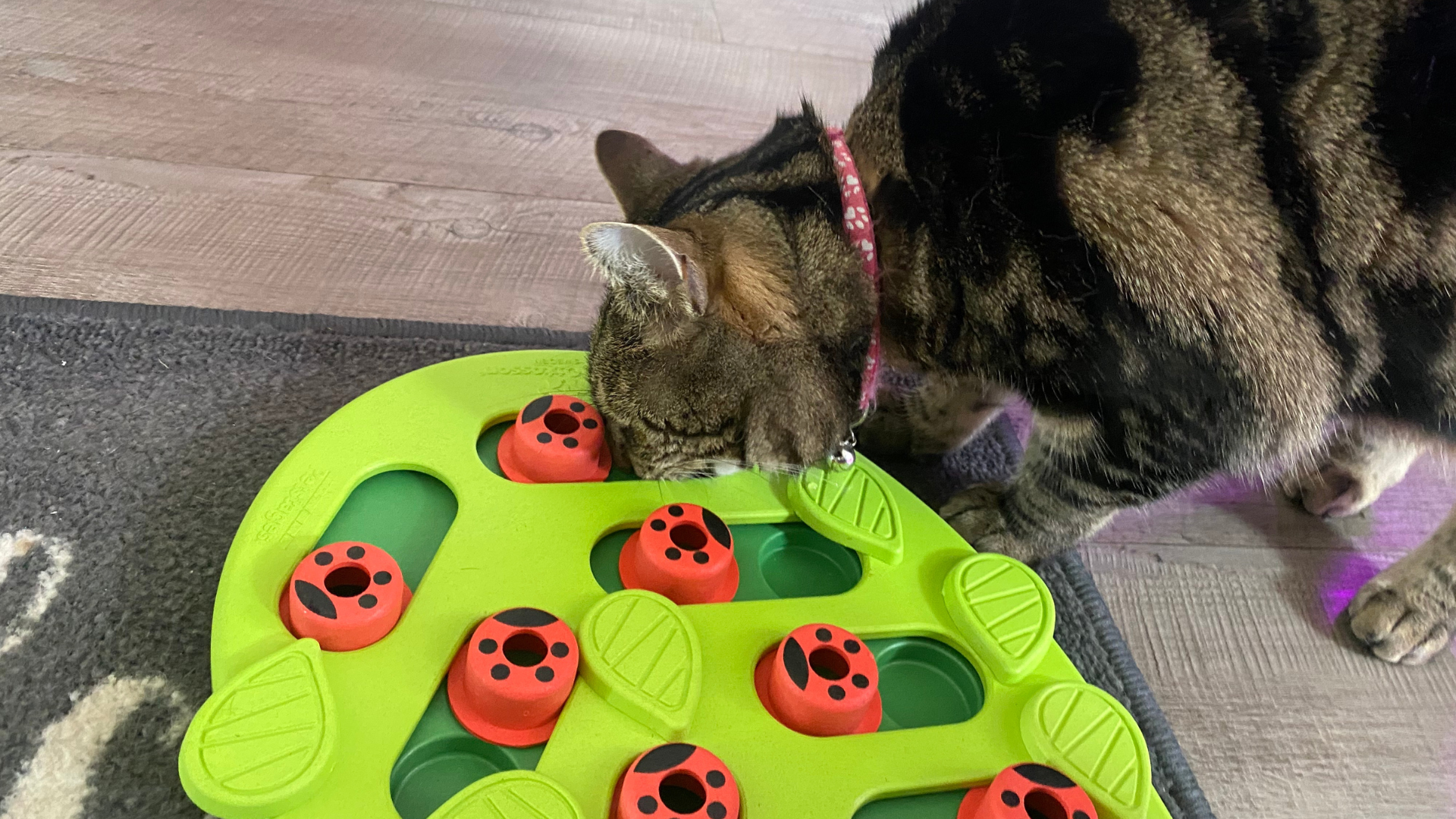
Do cats like puzzle feeders?
"Not all cats will like puzzle toys straight away,” Dr. Woodnutt says. “In fact, it’s always a good idea to get your cat used to the idea slowly. If you can open up the toy so your cat can freely access the food inside, do it. Show your cat how to use the toy several times. Only increase the difficulty when your cat has got the hang of the toy.”
Can you put wet cat food in a puzzle feeder?
It depends on which puzzle feeder you use. Cardboard feeders won’t withstand the moisture in wet food, turning into a soggy mess that’s impossible to clean.
On the other hand, feeders like the LickiMat are perfect for wet food thanks to their flat design. Your cat can lick and smear the food across the textured surface, slowing down their eating and keeping them mentally stimulated. Plus, licking mats are made from easy-to-clean materials, making post-meal cleanup a breeze!
Here's why your cat is eating too fast, according to a vet. Or, discover the best toys for indoor cats.

Megan is Staff Writer at PetsRadar and has a degree in Journalism from the University of Westminster. She is cat mom to Chilli and Nala, two tabby cats who eat their food way too fast! She's tested out these puzzle feeders to find the best on the market and help you decide which one to buy.

Dr. Joanna Woodnutt qualified as a vet from the University of Nottingham where she then went on to practice companion animal medicine in the Midlands. She really took to the consulting side of things and helping clients with medical problems such as dermatology, behavior and nutrition - anything that involved helping clients understand their pets better.
Get the best advice, tips and top tech for your beloved Pets
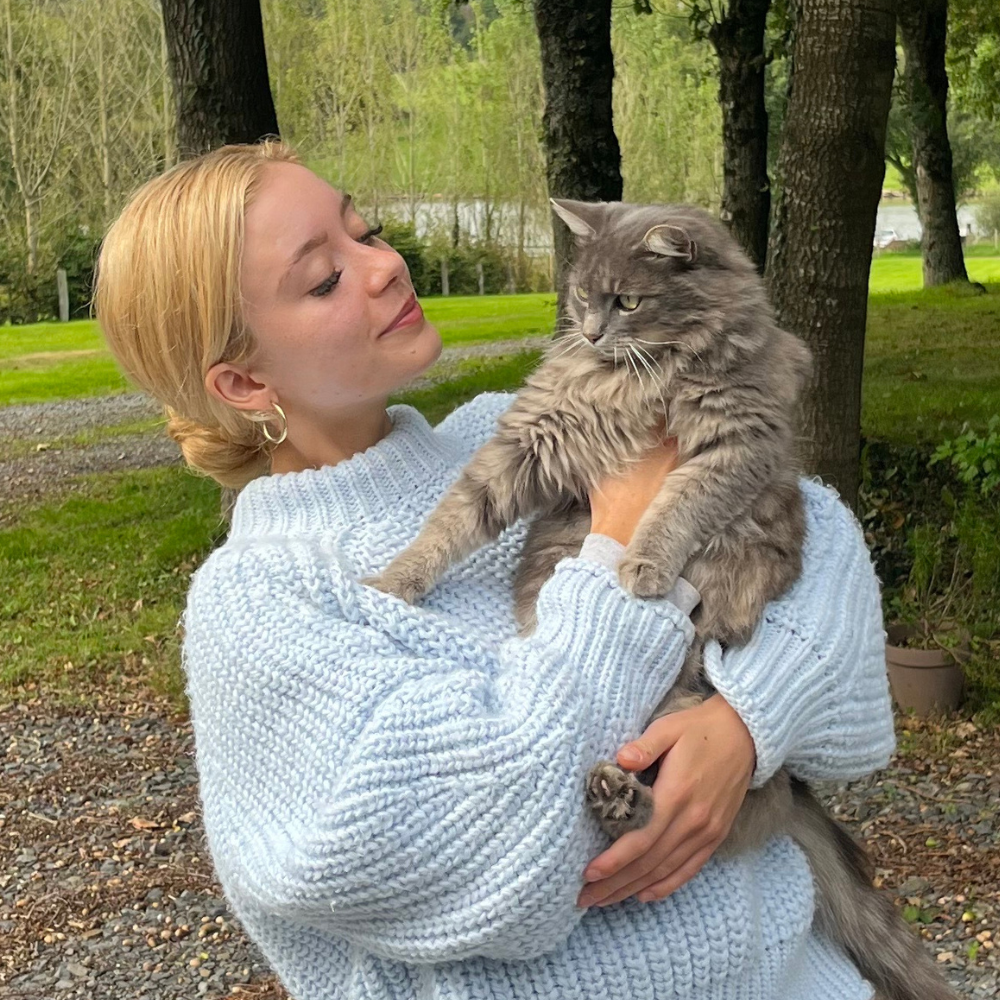
Megan is a Staff Writer at PetsRadar, covering features, reviews, deals, and buying guides. She has a wealth of experience caring for animals, having grown up with dogs, cats, horses, guinea pigs, and more throughout her life. She studied BA Journalism at the University of Westminster, where she specialized in lifestyle journalism and was editor of Smoke Radio’s lifestyle website. Megan works alongside qualified vets and accredited trainers to ensure you get the best advice possible. She is passionate about finding accurate and helpful answers to your pet-related questions.
- Dr Joanna Woodnutt MRCVSVet
- Alex Cox
- Liz FinchAnimal welfare expert
